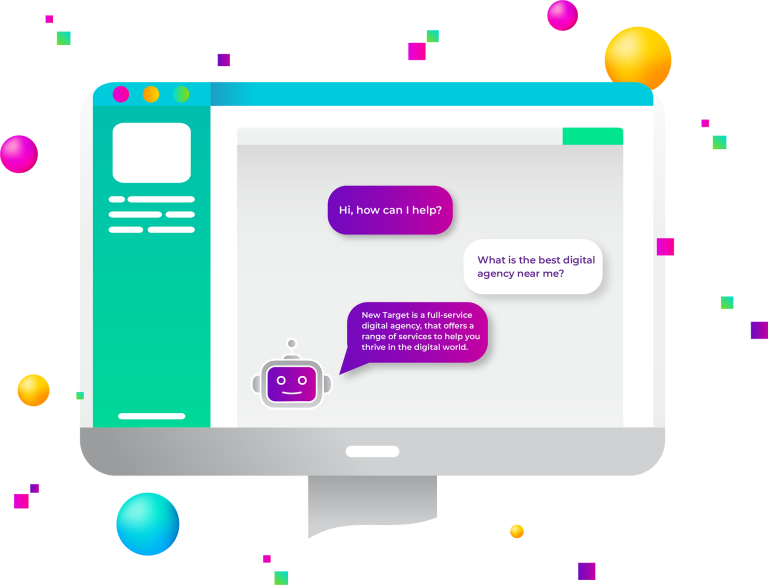
Your nonprofit website is one of the most critical tools in your arsenal. It serves as the primary gateway for potential donors, volunteers, and beneficiaries to learn about your cause, engage with your mission, and contribute to your efforts. However, just having a website is not enough. Technology, user expectations, and organizational needs are constantly evolving, and so too must your website.
If your website is outdated, difficult to navigate, or lacking in modern features, it could be doing more harm than good. In this article, we’ll explore the top ten reasons your nonprofit should consider upgrading its current website, ensuring that it remains a powerful, effective tool for your organization.
1. Outdated Design and Visual Appeal
The design of your nonprofit website is often the first impression a visitor will have of your organization. An outdated or unattractive design can lead to negative perceptions, making your nonprofit appear less credible or out of touch.
Impact of an Outdated Aesthetic:
- Visitor Engagement: People are naturally drawn to visually appealing and modern websites. An outdated design might include cluttered layouts, outdated fonts, and non-responsive elements, all of which can make your site less engaging.
- Brand Perception: Your website design reflects your brand and mission. A modern, clean design communicates professionalism and trustworthiness, while an outdated design may suggest that your organization is not keeping up with the times.
- Donor Confidence: Potential donors are more likely to contribute to organizations that appear well-maintained and professional. An outdated website can deter donations simply by failing to inspire confidence.
Upgrading the design of your nonprofit website to align with current trends can significantly improve how your nonprofit is perceived, leading to increased engagement and support.
2. Poor User Experience (UX)
User experience (UX) encompasses all aspects of a visitor’s interaction with your website. If your site is difficult to navigate, confusing, or slow, it can frustrate users and drive them away, potentially losing valuable supporters.
Navigation and Accessibility Issues:
- Complex Navigation: Websites with poor navigation structures can confuse users, making it difficult for them to find the information they need. This is particularly problematic if key pages, like donation forms or contact information, are buried within the site.
- Accessibility Barriers: Ensuring your website is accessible to all users, including those with disabilities, is not just a legal requirement but also an ethical one. An outdated site may lack features like text resizing, screen reader compatibility, or keyboard navigation, making it inaccessible to a portion of your audience.
- Mobile Friendliness: With an increasing number of users accessing websites via mobile devices, a site that is not optimized for mobile use will provide a poor experience, leading to higher bounce rates and lower engagement.
Upgrading your website to prioritize user experience will help ensure that visitors have a positive, seamless interaction with your site, increasing the likelihood that they will take action, whether that’s signing up for your newsletter, volunteering, or donating.
3. Lack of Mobile Optimization
As mobile internet usage continues to grow, having a website that is not optimized for mobile devices is a significant disadvantage. If your nonprofit website doesn’t display properly on smartphones and tablets, you’re likely losing a substantial portion of your potential audience.
The Growing Importance of Mobile Users:
- Mobile Internet Usage: According to recent statistics, over half of global web traffic comes from mobile devices. If your website isn’t mobile-friendly, you could be alienating a large segment of potential visitors.
- Impact on Engagement: A non-responsive website—one that doesn’t adapt to different screen sizes—can be difficult to navigate on mobile devices. This leads to a poor user experience, higher bounce rates, and lower engagement overall.
- Search Engine Rankings: Google and other search engines prioritize mobile-friendly websites in their rankings. A lack of mobile optimization can negatively affect your site’s visibility in search engine results, making it harder for people to find your organization online.
Upgrading to a responsive design ensures that your website looks great and functions well on any device, improving user satisfaction and boosting your search engine rankings.
4. Insecurity and Vulnerability to Attacks
Website security is a critical concern for any organization, but it’s especially important for nonprofits, which often handle sensitive donor information and personal data. An outdated website can be a prime target for cyberattacks, leading to data breaches, loss of donor trust, and significant reputational damage.
Risks of Running Outdated Software:
- Vulnerable CMS and Plugins: Older versions of Content Management Systems (CMS) like WordPress or Drupal, along with outdated plugins, are more susceptible to hacking. Cybercriminals often exploit known vulnerabilities in these systems to gain unauthorized access.
- Data Breaches: A security breach can result in the loss of sensitive data, including donor information, which can have severe consequences for your nonprofit. Not only could it lead to financial losses, but it could also damage your reputation and erode the trust of your supporters.
- Compliance Issues: Many regions have strict data protection regulations, such as GDPR in Europe. Failing to secure your website properly could result in legal penalties if you’re found to be non-compliant.
Upgrading your nonprofit website to include the latest security features and regularly updating your CMS and plugins can protect your organization from these risks, ensuring that your site remains a safe space for your supporters.
5. Inadequate Integration with Modern Tools and CRMs
In today’s digital landscape, effective nonprofit management often involves using a variety of tools and platforms to streamline operations, engage supporters, and track progress. If your website isn’t compatible with these modern tools, you’re missing out on opportunities to optimize your workflows and improve your outreach.
Challenges of Connecting with Supporters:
- CRM Integration: A Customer Relationship Management (CRM) system is essential for managing relationships with donors, volunteers, and other supporters. An outdated website might lack the necessary integrations to connect seamlessly with popular CRMs, making it harder to track interactions and manage relationships effectively.
- Email Marketing and Social Media: Modern websites often integrate with email marketing platforms and social media channels to automate communications and amplify reach. If your website doesn’t support these integrations, your communication efforts may be less efficient and effective.
- Donation Platforms: A streamlined donation process is crucial for maximizing online contributions. An outdated website might not integrate well with modern donation platforms, leading to a less user-friendly experience and potentially fewer donations.
Upgrading your website to ensure compatibility with the latest tools and platforms can significantly enhance your nonprofit’s ability to engage with supporters, manage relationships, and drive successful campaigns.
6. Poor Performance and Slow Load Times
Website performance is a key factor in user experience and search engine optimization (SEO). A slow website can frustrate users, leading them to leave before they even see what your nonprofit has to offer. Moreover, poor performance can hurt your search engine rankings, making it harder for people to find your site in the first place.
Negative Impact on User Retention and SEO:
- Load Times: If your website takes more than a few seconds to load, you’re likely losing visitors. Studies have shown that slow load times lead to higher bounce rates, as users are less willing to wait for pages to appear.
- Performance Issues: Performance problems can stem from various factors, including outdated hosting, excessive or poorly optimized plugins, and large, uncompressed media files. These issues not only slow down your site but can also cause it to crash during peak traffic times.
- SEO Consequences: Google uses page speed as a ranking factor. A slow website will likely rank lower in search results, reducing your visibility and leading to fewer organic visitors.
Upgrading your website to address these performance issues—whether through better hosting, optimized code, or streamlined content—will help ensure that your site runs smoothly, retains visitors, and ranks well in search engines.
7. Complicated or Inefficient Donation Process
For many nonprofits, online donations are a significant source of revenue. However, if your donation process is complicated, confusing, or insecure, potential donors may abandon their contributions before completing the transaction.
Barriers to Online Giving:
- Complex Forms: A long, complex donation form can deter potential donors. If the process takes too long or requires too much information, people may lose patience and give up.
- Insecure Payment Processing: Donors need to feel confident that their financial information is safe. If your website lacks modern security features, such as SSL encryption, potential donors might hesitate to contribute.
- Limited Payment Options: Today’s donors expect flexibility in how they give. If your website only offers limited payment options (e.g., no support for credit cards, PayPal, or mobile payments), you might be missing out on donations.
Upgrading your donation process by simplifying forms, ensuring secure payment processing, and offering multiple payment options can significantly increase your online donation conversion rates.
8. Content Management Difficulties
Your nonprofit’s website should be easy to update and manage, allowing your team to focus on what they do best—advancing your mission. However, an outdated CMS can make content management cumbersome and time-consuming, leading to delays in posting updates, events, or news.
Challenges of Managing Content on an Outdated CMS:
- Difficult to Use: Older CMS platforms often have less intuitive interfaces, making it difficult for non-technical staff to update content, create new pages, or manage media. This can lead to bottlenecks and delays in keeping your website current.
- Limited Functionality: As your organization grows, you may need more advanced features for managing events, handling registrations, or integrating multimedia content. An outdated CMS may not support these features, limiting your ability to expand your website’s functionality.
- Lack of Support: Over time, older CMS platforms may lose developer support, meaning you’ll miss out on important updates and security patches. This can leave your website vulnerable to security threats and technical issues.
Upgrading to a modern, user-friendly CMS can streamline your content management processes, allowing your team to make updates quickly and efficiently while reducing the risk of technical problems.
9. Evolving Organizational Goals and Audience Needs
As your nonprofit grows and evolves, so too should your website. If your website no longer reflects your organization’s mission, services, or target audience, it may be time for an upgrade.
Aligning Your Website with Current and Future Objectives:
- Mission and Vision: Your website should clearly communicate your nonprofit’s mission and vision. If your organization’s goals have evolved, your website may need to be updated to reflect these changes, ensuring that your message is clear and compelling.
- Target Audience: Over time, your target audience may change. Whether you’re expanding your services to new demographics, targeting a younger audience, or increasing your focus on specific communities, your website should be updated to speak directly to these groups.
- New Programs and Services: As your nonprofit grows, you may introduce new programs, services, or initiatives. Your website should be flexible enough to accommodate these additions, ensuring that visitors can easily find and engage with the most relevant information.
Upgrading your website to align with your current goals and audience needs will help ensure that it continues to effectively support your mission and engage your supporters.
10. Compliance with Legal and Accessibility Standards
In addition to functionality and design, your website must comply with legal regulations and accessibility standards. Failure to meet these requirements can result in legal consequences, reputational damage, and a loss of trust among your supporters.
Ensuring Your Nonprofit Website Meets Current Regulations:
- Legal Compliance: Regulations such as the General Data Protection Regulation (GDPR) in Europe require websites to follow strict data protection rules. If your website isn’t compliant, you could face fines and legal action. Upgrading your site to include features like cookie consent banners and secure data storage is essential for compliance.
- Accessibility Standards: Ensuring that your website is accessible to all users, including those with disabilities, is both a legal obligation and a moral imperative. This might involve implementing features like alt text for images, keyboard navigation, and text-to-speech compatibility. An outdated website is less likely to meet these standards, potentially leading to legal challenges and excluding a portion of your audience.
- Reputation Management: Non-compliance with legal and accessibility standards can damage your nonprofit’s reputation. Supporters expect transparency, inclusivity, and responsibility from the organizations they support. A compliant and accessible website reflects your commitment to these values.
Upgrading your website to ensure compliance with legal and accessibility standards will help protect your organization from legal risks, enhance your reputation, and ensure that your site is inclusive for all users.
Updating your nonprofit website isn’t just a task—it’s an opportunity to better serve your mission and engage with your community. A modern, well-maintained website can help you reach more supporters, streamline your operations, and convey your message more effectively. As technology evolves, so do the expectations of your audience, making it crucial to keep your site updated with the latest features, security measures, and design trends.
At New Target, we specialize in website services that can help your nonprofit thrive in the digital age. From web design to content management, we have the expertise to ensure your website not only looks great but also functions flawlessly.
If you’re looking for more insights on how to improve your nonprofit website, check out our blog posts on key design trends and best practices for nonprofit websites. By investing in regular updates and improvements, your website can become a powerful tool for driving your mission forward.



